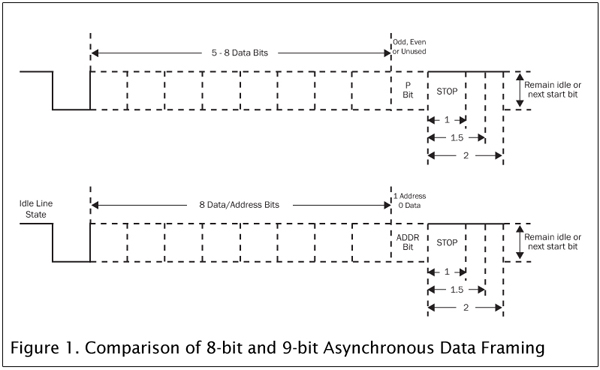What Is 9-Bit Data Framing?
Definition of 9-bit framing
9-bit data framing is a simple, yet effective, method of allowing many embedded devices on a multidrop network to maximize processing time. This data transfer method is designed to improve the performance of the embedded devices in these networks.
Typical 5-8 bit data framing
When using typical 5-8 bit data framing, a communication layer protocol must be used to identify the target of the message. In order for the target to ensure it gets the message, it must constantly check incoming data to see if it is a message intended for the device. This continuous data checking reduces the amount of processing time available to the embedded device.
How 9-bit framing saves time
Many embedded multidrop devices can use 9-bit data framing to significantly reduce wasted time checking network messages. 9-bit data framing uses the bit typically associated with parity error detection (see figure 1) to identify address messages. Embedded devices equipped to communicate using 9-bit data framing will ignore any serial data that does not have the address bit set unless it has previously identified an address message associated with it.

When a command needs to be sent to a device, the action is triggered by first sending an address message which all of the embedded devices will check. If the address identified is not associated with the device, it will simply go back to its normal tasks ignoring any incoming data messages. If the address identified indicates the next data messages are intended for the device, it will act on the messages appropriately.
9-bit data framing is a simple, yet effective, method of allowing many embedded devices on a multidrop network to maximize processing time.
Categories:
